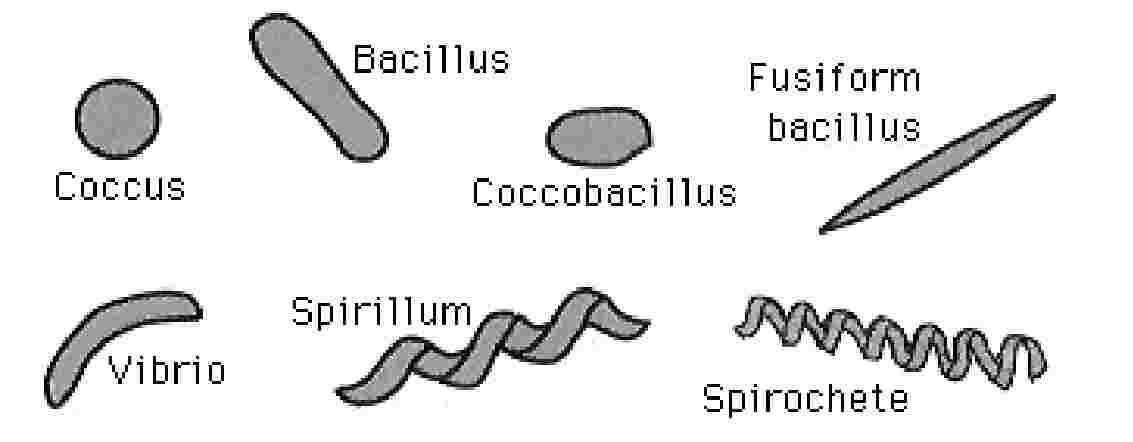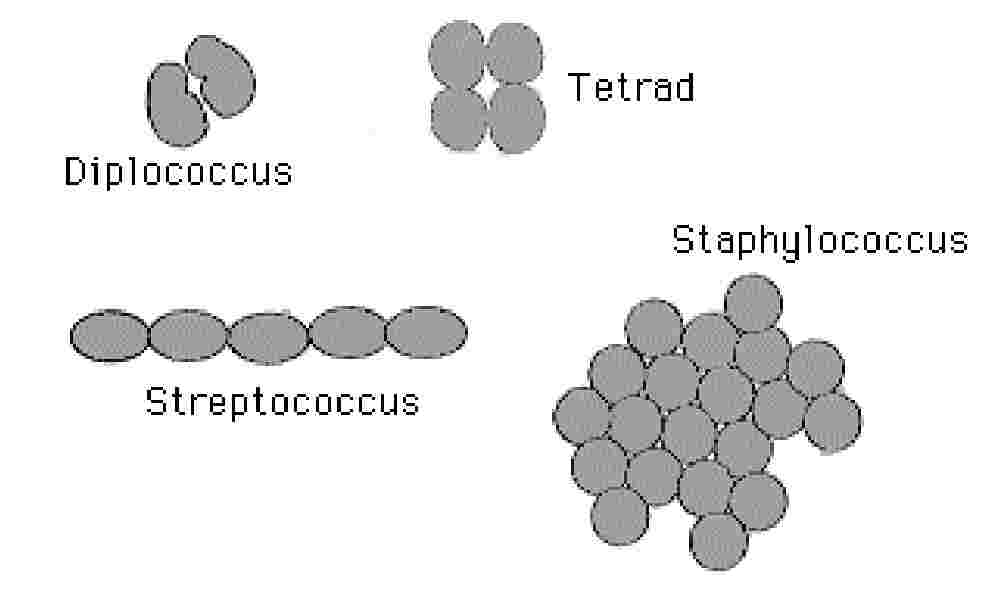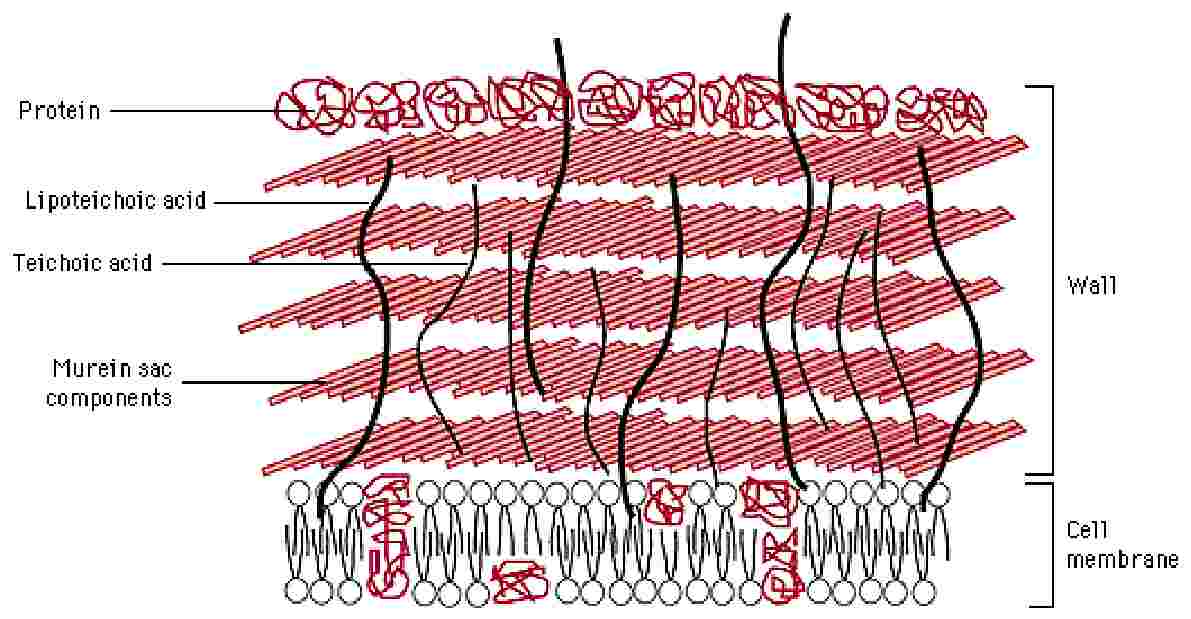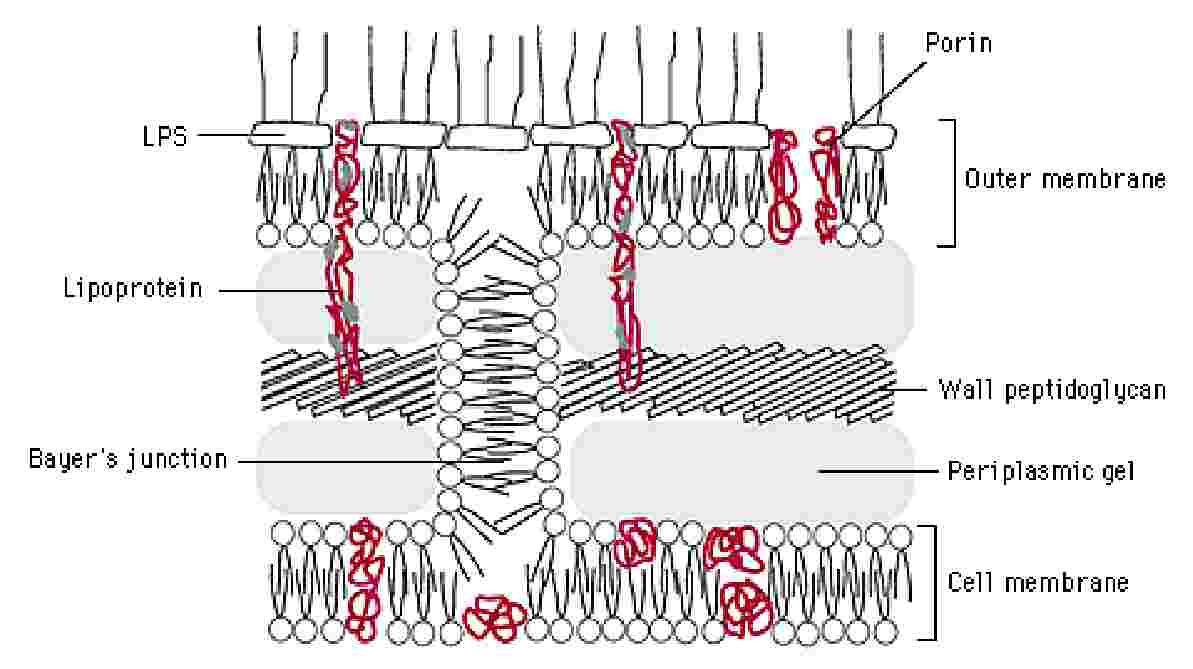
Structures of the Bacterial Cell Wall
Bacteria
Bacteria vs. Viruses
|
Bacteria |
Viruses |
|
Have degrees of self-sufficiency |
Are host cell dependent |
|
Contain both DNA and RNA. |
Infectious particle contains either DNA or RNA. |
|
Enclosed by a cytoplasmic membrane and walls of varying complexity. |
Enclosed in a protein coat (capsid) of identical subunits or a membrane layer obtained from the host cell. |
|
Many proteins for biosynthesis and metabolism. |
Few proteins, no metabolism |
|
Usually can generate ATP. |
Cannot generate ATP. |
|
Maintain integrity of cell during division. |
Integrity of infectious particle lost during replication. |
Differences between Prokaryotes and Eukaryotes
|
PROKARYOTES |
EUKARYOTES |
|
No nuclear membrane, no meiosis, one chromosome. |
True nuclear membrane |
|
No mitochondria, respiration and electron transport in cytoplasmic membrane. |
Mitochondria present. |
|
Ribosomes 70s. |
Ribosomes 80s (70s in mitochondria) |
|
No apparent organelles, no golgi, no ER, no lysosomes, no chloroplasts, no glyoxosomes, no microtubules, no nucleolus |
Lots of organelles, chloroplasts only in plants, glyoxosomes not always present |
|
Cell wall complex peptidoglycan except mycoplasma and archaebacter |
Cell walls, if present are homopolymers, chitin, mannan cellulose etc. |
|
No phagocytosis |
Some are phagocytic |
|
Genetic exchange by conjugation is plasmid mediated, fragmentary, and unidirectional. |
Genetic exchange by gamete fusion, meiosis occurs. |
|
Flagella (if present) are single chain of homologous protein molecules. |
Flagella are 20 fibril sheathed, organized structures. |
|
No ameboid motion, no cytoplasmic streaming. |
Some have ameboid motion, some stream. |
Characteristics of Bacteria


The Cell Wall
Gram Positive vs. Gram Negative Cell Walls



